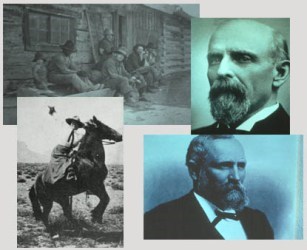
NPS The people that defined the history of Bighorn Canyon are as varied as the country that surrounded them. They overcame hardships to forge a homeland, explore new frontiers or eke out a living in an extreme environment. Click on the names to read their biographies. Native Americans Fur Traders Andrew Henry made history twice! First, as a member of a party which opened up western lands to the fur trade, then a decade later, he would help recruit the mountain men and lead many of them over the Bad Pass on an historic trek. Jim Bridger made history time and again over a 45 year period. From fur trader to scout and guide, Bridger led commerical, surveying, and military expeditions through the Bighorn Canyon area that blazed new trails. Jedediah Smith was known to always have three things by his side: a bible, rifle, and a teddy bear. These constant companions were witness to his pathbreaking explorations in pursuit of adventure and the fur trade. Jim Beckwourth was born into slavery, but once he gained freedom headed to the West as a fur trader and never looked back. In the process he became the foremost African-American frontiersman. Ranchers Erastus Ewing came to the Bighorn Canyon area looking for gold. He staked numerous claims, but they held little gold. Yet these claims proved valuable for their water rights. He used them to establish a family ranch on Layout Creek. Grosvener W. Barry left a life of luxury back east, to try his hand at homesteading, mining and ranching. He failed many times, yet finally persevered and became the first person to recognize and exploit the recreation potential of Bighorn Canyon. Characters John Blue built a periscope in his stone dugout to watch for people sneaking up on him. In one of his most notable fits of paranoia he set out by horse for Washington, D.C. to tell the president about the people who were out to get him. Eddy Hulbert came to Doc Barry’s ranch at the age of 13 as an orphan. He was just looking for a place in the world. He found that place as a blacksmith, and he literally forged much of Hillsboro in his workshop. He was still working hard in his blacksmith shop on the day he died. Farmers
|
Last updated: February 24, 2015
